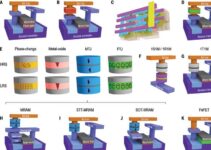It seems like emerging technologies that will shape the future are arriving on a daily basis today. For businesses to stay competitive, embracing or at least acknowledging new emerging technologies is a must.
From AI to XR, these technologies are disrupting the way businesses work, as well as day-to-day consumer activities. It’s understandable, however, if you’re struggling to keep up with all the tech advancements in recent years.
To help you stay on top of the key developments, we’ve put together this list of the top 5 emerging technologies that will shape the future. Let’s take a closer look at them.
Top 5 Emerging Technologies
These top 5 emerging technologies are changing the world – let’s learn more about their impacts across various industries.
3D Printing
Source: Statista
Additive manufacturing, or 3D printing, is one of the most important technologies of the last two decades – and it’s still in its infancy. From printing prototypes to cheap house building to creating prosthetics and bone repair, this technology offers a new dimension to producing and manufacturing tangible objects.
Here are some influential use cases:
Education and Entrepreneurship
The earliest uses of 3D printing related to prototyping, and education and entrepreneurship are big parts of this. When armed with 3D printing, students can bring their ideas to life, and entrepreneurs can test business ideas and designs to get feedback.
Healthcare
Source: Statista
Printing bones in 3D is barely scratching the surface of what’s possible in medicine. When paired with smart sensors, 3D printing has the potential to revolutionize prosthetic care and the production of medical devices.
Construction and Manufacturing
When 3D printing is added to manufacturing processes, it can significantly reduce the costs of prototyping and product development. When it comes to architecture, using 3D printing to create precise models of buildings – or even real structures – can significantly reduce risks that arise during the construction process.
5G
Like this infographic? Feel free to use it on your website or blog, but please remember to give us credit by linking back to techreport.com/statistics/emerging-technologies-that-will-shape-the-future in your post.
Fifth-generation connectivity, or 5G, is about a lot more than low latency and speedier mobile connections. It’s a brand-new technology that has the potential to revolutionize entire industries, ranging from manufacturing to healthcare.
The widespread deployment of 5G communication networks will bring changes that both businesses and policymakers need to be prepared for.
A 2020 report by the World Economic Forum and PwC forecasts that 5G will generate $3.6 trillion in economic output by 2035. Let’s take a closer look at the most interesting 5G use cases:
Smart Cities and IoT
Source: Statista
Without 5G, the capacity of smart cities and the Internet of Things (IoT) would be much more limited. 5G allows sensors and devices to communicate seamlessly, optimizing traffic flow, reducing energy consumption, and enhancing public safety. That will mean that our cities will be safer, more efficient, and more sustainable.
Industry 4.0 and Manufacturing
Source: Statista
With 5G providing low latency and high reliability for Industry 4.0, the real-time monitoring and control of critical processes will be more seamless than ever. And since 5G supports AR and VR applications, many manufacturing operations will be carried out remotely, reducing the cost of site visits, for instance.
Healthcare
Telemedicine, remote patient monitoring, and VR surgeries are only a few healthcare use cases that are possible with 5G. The connectivity provided by 5G in remote areas can also ensure that people with restricted access to healthcare can get the support they need.
Artificial Intelligence
Source: Statista
We’ve written before about how AI is gaining prevalence across all industries – and it isn’t showing signs of stopping.
Whether you’re excited about AI or are weary of its implications, it can’t be disputed that the emerging technology is here to stay, in one form or another, and it’s rapidly changing the world – ChatGPT alone is on the path to disrupt many jobs, for example.
Indeed, AI has found applications across many sectors. Here are some of the key areas it’s impacting:
Finance and Compliance
Like this infographic? Feel free to use it on your website or blog, but please remember to give us credit by linking back to techreport.com/statistics/emerging-technologies-that-will-shape-the-future in your post.
It’s not hard to imagine that advanced AI algorithms that detect fraud and assess risks in transactions would readily find applications in the financial industry and AML. In systems trained to detect suspicious financial activity, AI can reduce the risk of fraudulent transactions and money laundering.
Customer Service
An increasing number of online retailers are adopting AI chatbots for customer interaction. Chatbots can provide customers with unique, tailored experiences, resulting in increased satisfaction while also saving retailers time and money.
Manufacturing and Energy
Robotics and automation driven by AI are optimizing manufacturing processes around the world. Predictive analytics-based AI can provide insights into the amount of maintenance required, reducing the time and costs associated with post-production repairs.
When it comes to energy, AI-driven algorithms can tell you how much you should be using to optimize your operations while making enough savings to meet your sustainability targets. This could be particularly powerful if used in conjunction with 5G – and many telecom operators are working on just this problem.
Quantum Computing
Source: Statista
Quantum computing uses principles of quantum physics to solve complex problems that traditional computers can’t solve in reasonable timeframes.
By using the principles of superposition and entanglement, quantum computing increases problem-solving processing capacity and enables machines to work on multiple problems at the same time.
Industries and governments are noticing the impact of quantum computing. For example, Canadian unicorn Xanadu received a CAD $40 million grant to pursue quantum computing work earlier this year. Here are some of the possible applications of quantum computing in the future:
Cryptography
Source: Statista
Quantum computing may break today’s AES-256-bit encryption standard. This presents new challenges for cybersecurity professionals, and it may drive the development of new quantum-resistant solutions as well as significant innovations in the sector.
Process Optimization
Large-scale manufacturing and logistical operations can be challenging to plan, especially on a global scale. Quantum computing’s capabilities can help plan complex routes, especially during crises, and effectively allocate resources.
Materials and Drug Development
Quantum computing will allow experts to build simulation models, including chemical and molecular interaction scenarios. These scenarios could introduce a brand-new era of drug development.
Similarly, simulating material properties with quantum computing may aid in the development of new materials – with implications for a wide range of industries, such as construction and energy storage.
Extended Reality and the Internet of Senses
Imagine being able to not only see the virtual world but also feel and smell objects in it. That future is possible thanks to the marriage of Extended Reality (XR) and the Internet of Senses (IoS), which is creating a sensory revolution in the digital technology field.
The term “XR” encompasses virtual environment technologies like AR, VR, and MR (mixed reality), while “IoS” refers to a multi-sensory digital environment. The two together can enhance sensory engagement and offer multi-sensory experiences for consumers. Here are some possibilities for practical applications:
Healthcare
Source: Statista
The FDA already recognizes the potential of XR in healthcare. When combined with IoS, the sensory environment can have big implications for therapy, care, and pain management.
For instance, if someone might benefit from pet therapy but has allergies, IoS and XR combined can accommodate this by providing a VR pet that feels like a real one. Rehabilitation therapy can also be assisted with XR and IoS sensory experiences.
Gaming and Entertainment
It’s no surprise that the beautiful visuals and immersive experiences provided by XR have the potential to revolutionize gaming and entertainment. Tactile feedback from games and events, such as concerts and sports matches, could transform participants’ experiences.
Training and Simulation
XR and IoS can also help achieve huge milestones in education, training, and simulation. With multi-sensory content, complex concepts can be conveyed more easily, and trainees and students can get a type of “hands-on” experience that would previously have been challenging to simulate.
References
- 5 Exciting Emerging Technologies Shaping the Future (Ben Simon/LinkedIn)
- Top 10 Technologies That Will Shape the Future of Business in 2023 an Beyond (Chain Reaction/LinkedIn)
- Future technology: 22 ideas about to change our world (Science Focus)
- The Impact of 5G: Creating New Value across Industries and Society (World Economic Forum/PwC)
- Market share of 5G Internet of Things (IoT) endpoint installed base forecast worldwide in 2020 and 2023, by segment (Statista)
- Forecasted B2B 5G internet of things (IoT) unit sales for industry 4.0 applications from 2020 to 2030 (Statista)
- 5G contribution to global GDP by 2030, by industry (Statista)
- What is your top focus related to 3D printing in 2021? (Statista)
- Value of the medical device 3D printing market in Latin America from 2022 to 2027 (Statista)
- ChatGPT took their jobs. Now they walk dogs and fix air conditioners. (The Washington Post)
- Possible layoffs in companies in the United States due to ChatGPT adoption as of February 2023 (Statista)
- Consumer satisfaction with chatbot customer service in the United States as of June 2022 (Statista)
- Artificial intelligence (AI) adoption rate in financial businesses worldwide in 2022 and 2025 (Statista)
- Forecast quantum technology market revenue worldwide in 2040, by segment (Statista)
- What is quantum computing? (McKinsey & Company)
- Quantum security market revenue worldwide from 2021 to 2030, by method (Statista)
- Annual number of VR and AR medical devices approved for marketing by the FDA in the United States from 2015 to 2022, by therapeutic area (Statista)














